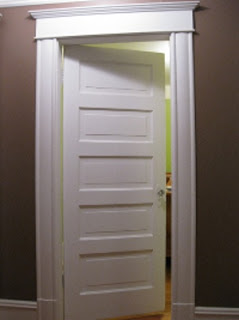According to the
Oregon Historical Society research library: Our 1904 home was formerly addressed as 463 E. 9th, or 463 N. 9th, depending on the year. It is placed on the giant hunk of land originally owned by Captain William Irving, a pioneer successful in the west coast shipping trade. Captain Irving developed a major portion of the land for middle or upper-middle class families of the time, which became what is now the Irvington neighborhood. The development of the west portion of this land was dictated by his wife, Elizabeth Irving, after the Captain's death in 1872. West Irvington was platted in 1890, to be filled in with a more working class population. According to Elizabeth Irving's restrictions, no establishments here were allowed to serve alcohol or be owned by Chinese residents (who were only permitted as servants in the households).
According to the City Guide archives, the longest owners we could find for our home were Myrtle and Harley Crandall, who lived in our home from 1923 to 1938. Married in 1910, Myrtle and Harley were supported by Harley's occupation as a carman/conductor for the railroad. Kern Crandall (a relative?) lived at 477 E 9th, just north of Thompson.
The house laid vacant in 1939, then was filled by a variety of names through the years as a rental (demonstrated by the many layers of paint over the woodwork). From 1982 to 1985 it was listed as an Oregon Zen Priory, a fact confirmed by our neighbors, who declared "Yeah, monks lived there."
Eric and I moved into this sweet old home in November of 2009. A year later, we embark on some modifications, starting with the kitchen. This site is meant to document our changes, in order to start a scrapbook for this home, which has held many people but cannot tell us much about them or its past. We only have clues - remnants of an old doorway along the side of the house, an incorporated back porch, the deep brown stain inside one tiny closet, mysteriously saved from layers of paint, that shows what the woodwork must have looked like once.
Here's to the next 100 years.














